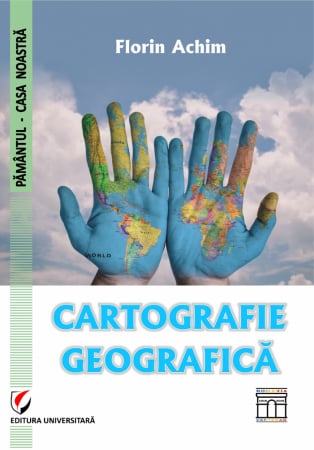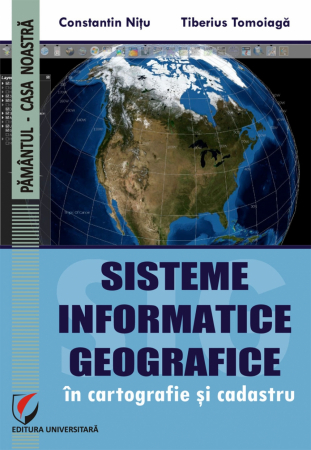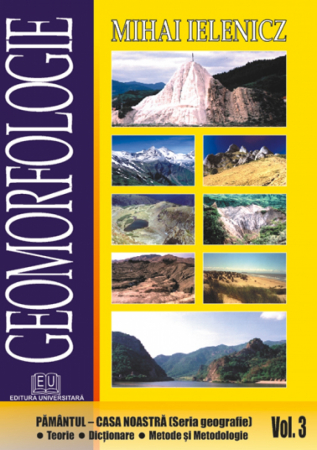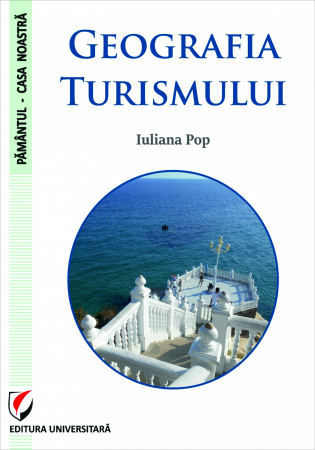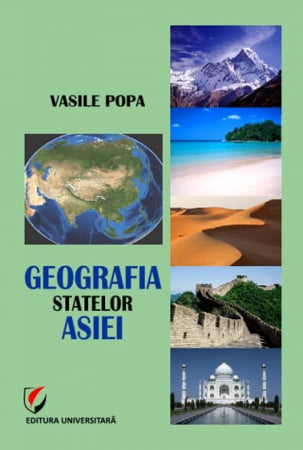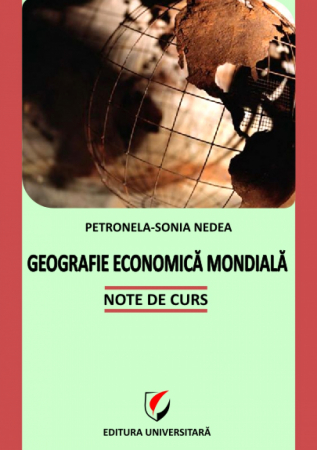Manuscript proposals: info@editurauniversitara.ro / 0745 204 115 //// Tracking orders Individuals / Sales:0745 200 718 / 0745 200 357 Orders Legal entities: 0721 722 783
ISBN: 978-606-28-0065-9
DOI: 10.5682/9786062800659
Publisher year: 2014
Edition: III, revizuita
Pages: 356
Publisher: Editura Universitara
Author: Aurel Gheorghilas
Product Code:
9786062800659
Do you need help?
0745 200 718
/
0745 200 357
- Description
- Download (1)
- Authors
- Content
- More details
- Where to find it
- Reviews (0)
As a relatively new field of research, tourism presents a growing complexity, in economic terms synthesizing the results of a large number of activities, and in psycho-social terms being a superior way of organizing free time. The high rates of development that tourism has known since the second part of the twentieth century are a direct consequence of the development of other economic sectors. Thus, the development of labor and production has driven the increase of income and purchasing power. These, correlated with the increase of the free time budget, by reducing the week and the working day, created viable premises for the development of the tourist act.
Tourism has become one of the most complex economic branches in the world, the whole society being involved in its development. At the same time, tourism reflects the whole society and can be considered a true barometer of it. Tourism superiorly capitalizes on the natural and anthropic potential of a country, continuously enriching them, satisfying multiple human motivations. It has a multiplier effect, introducing in the economic circuit unique aspects such as: landscape (for the "consumption" of which it is necessary to travel on the spot), hospitality, solicitude and information (geographical, cultural-historical, gastronomic, artistic, etc.). From an economic point of view, the development of tourism is materialized by the demand for an increased range of services and consumer goods, a demand that stimulates the producing and service sectors, leading to an increase in economic activities and consumption.
The research of the tourist phenomenon has captured the attention of an impressive volume of institutions and specialists from the most different fields (geographers, economists, psychologists, architects, historians, etc.). Geographers, based on a discipline with an extremely dynamic and complex character, in this case Geography, were the ones who managed to analyze the tourist phenomenon through the complexity of the tourist potential and the socio-economic phenomena conditioned by its capitalization. Thus, an indispensable object was born in the profile faculties - Tourism Geography - an integrative discipline that consolidates relations with the main geographical sciences: Physical Geography through the natural potential of attractiveness and Human Geography, tourism being a specific human activity.
The object of study of tourism geography is represented by the tourist phenomenon with all its complexity, respectively the movement of people towards the objectives with attractive function, from the issuing area to the receiving area, where the consumption of the tourist product and the capitalization of infrastructure elements take place.
Tourism has become one of the most complex economic branches in the world, the whole society being involved in its development. At the same time, tourism reflects the whole society and can be considered a true barometer of it. Tourism superiorly capitalizes on the natural and anthropic potential of a country, continuously enriching them, satisfying multiple human motivations. It has a multiplier effect, introducing in the economic circuit unique aspects such as: landscape (for the "consumption" of which it is necessary to travel on the spot), hospitality, solicitude and information (geographical, cultural-historical, gastronomic, artistic, etc.). From an economic point of view, the development of tourism is materialized by the demand for an increased range of services and consumer goods, a demand that stimulates the producing and service sectors, leading to an increase in economic activities and consumption.
The research of the tourist phenomenon has captured the attention of an impressive volume of institutions and specialists from the most different fields (geographers, economists, psychologists, architects, historians, etc.). Geographers, based on a discipline with an extremely dynamic and complex character, in this case Geography, were the ones who managed to analyze the tourist phenomenon through the complexity of the tourist potential and the socio-economic phenomena conditioned by its capitalization. Thus, an indispensable object was born in the profile faculties - Tourism Geography - an integrative discipline that consolidates relations with the main geographical sciences: Physical Geography through the natural potential of attractiveness and Human Geography, tourism being a specific human activity.
The object of study of tourism geography is represented by the tourist phenomenon with all its complexity, respectively the movement of people towards the objectives with attractive function, from the issuing area to the receiving area, where the consumption of the tourist product and the capitalization of infrastructure elements take place.
-
GEOGRAFIA TURISMULUI – METODE DE ANALIZĂ ÎN TURISM
Download
AUREL GHEORGHILAS
PART I - GENERAL NOTIONS OF TOURISM GEOGRAPHY
Chapter 1. GENERAL ASPECTS, CONTENT, TERMINOLOGY / 11
1.1. Geography of tourism - interdisciplinary object of study / 11
1.2. Concepts and definitions in Tourism Geography / 15
1.3. International organizations with responsibilities in the field of tourism / 25
Chapter 2. BRIEF HISTORY OF THE APPEARANCE AND EVOLUTION OF TOURIST TRAVEL / 30
2.1. Ancient period / 30
2.2. The period of the Middle Ages until the seventeenth century / 35
2.3. English period - XVII-XVIII / 38 centuries
2.4. The modern period - the 19th century - the beginning of the 20th / 41st century
Chapter 3. THE DIMENSION OF THE TOURIST PHENOMENON IN THE CONTEMPORARY PERIOD / 45
3.1. Consolidation of tourism as a mass phenomenon / 45
3.2. The current dimension of the international tourist circulation / 50
3.3. Tourism and sustainable development / 59
Chapter 4. TYPES AND FORMS OF / 65
4.1. Classification criteria and particularities / 65
4.2. New types and forms of tourism / 82
Chapter 5. THE TOURIST BASINS OF THE EARTH / 91
5.1. The tourist basin of Europe / 92
5.1.1. Tourist exploitation of coastal areas / 92
5.1.2. Arrangement and tourist capitalization of the Alps / 100
5.1.3. The component elements and the capitalization of the European cultural tourist space / 105
5.2. The tourist basin of America and its adjacent areas / 135
5.2.1. Offer for seaside tourism / 137
5.2.2. Objectives and areas dedicated to cultural tourism / 141
5.3. The tourist basin of Asia, Australia and Oceania / 148
5.3.1. The complexity of the cultural-historical tourist objectives / 151
5.3.2. Luxury tourism. Case study - Dubai - United Arab Emirates / 165
5.3.3. Pioneering tourism. Case study - Himalayan Mountains / 168
5.4. The tourist basin of Africa / 170
PART II METHODS AND INDICATORS OF ANALYSIS REGARDING TOURISM ACTIVITY
Chapter 6. STATISTICAL SYSTEMS USED IN THE TOURISM INDUSTRY / 177
6.1. Methods for obtaining statistical information / 177
6.2. Types of tourist indicators - classification criteria / 181
Chapter 7. TOURIST TRANSPORT INFRASTRUCTURE AND SERVICES / 186
7.1. Air tourist transport / 187
7.2. Land tourist transport / 193
7.3. Naval tourist transports / 199
Chapter 8. TOURIST RECEPTION STRUCTURES / 201
8.1. Accommodation structures / 201
8.2. Public catering units and services / 211
8.3. Leisure structures and services / 215
8.4. Tourism labor force / 221
Chapter 9. TOURIST MARKET - EVALUATION CHARACTERISTICS AND INDICATORS / 224
9.1. Peculiarities of the tourist market / 224
9.2. Tourist demand and determining factors of tourist consumption / 227
9.2.1. Tourist motivation / 228
9.2.2. Social and economic factors / 231
9.3. Tourist offer and product marketing / 234
9.3.1. Policies for organizing and launching the tourist offer / 235
9.3.2. Marketing the offer on the tourist market / 239
PART III METHODS AND INSTRUMENTS FOR KNOWLEDGE EVALUATION
Chapter 10. SEMESTER EVALUATION AT COURSE HOURS / 247
10.1. Designing the evaluation and examination approach / 247
10.2. Types of items. Recapitulation / 259
10.2.1. Items with multiple choice / 259
10.2.2. Items for filling in the blanks / 270
10.2.3. Items of association / selection / 276
10.2.4. Items based on cartographic support / 281
10.2.5. Subjective items (requiring an open answer) / 287
Chapter 11. COMPLEMENTARY EVALUATION METHODS SPECIFIC TO SEMINAR HOURS / 289
11.1. The objectives of the seminar on Tourism Geography / 289
11.2. Semester project / 291
11.2.1. Organization and capitalization of the tourist space in (… country or tourist region X…) / 293
11.2.2. Analysis of tourist performance indicators in the geographical region X / 300
BIBLIOGRAPHY / 305
ANNEX 1. World ranking according to tourism performance indicators - TOP 100/310
ANNEX 2. Tourism performance indicators for the main geographical regions of the Earth / 313
ANNEX 3. List of monuments inscribed in the World Heritage U.N.E.S.C.O. / 331
Chapter 1. GENERAL ASPECTS, CONTENT, TERMINOLOGY / 11
1.1. Geography of tourism - interdisciplinary object of study / 11
1.2. Concepts and definitions in Tourism Geography / 15
1.3. International organizations with responsibilities in the field of tourism / 25
Chapter 2. BRIEF HISTORY OF THE APPEARANCE AND EVOLUTION OF TOURIST TRAVEL / 30
2.1. Ancient period / 30
2.2. The period of the Middle Ages until the seventeenth century / 35
2.3. English period - XVII-XVIII / 38 centuries
2.4. The modern period - the 19th century - the beginning of the 20th / 41st century
Chapter 3. THE DIMENSION OF THE TOURIST PHENOMENON IN THE CONTEMPORARY PERIOD / 45
3.1. Consolidation of tourism as a mass phenomenon / 45
3.2. The current dimension of the international tourist circulation / 50
3.3. Tourism and sustainable development / 59
Chapter 4. TYPES AND FORMS OF / 65
4.1. Classification criteria and particularities / 65
4.2. New types and forms of tourism / 82
Chapter 5. THE TOURIST BASINS OF THE EARTH / 91
5.1. The tourist basin of Europe / 92
5.1.1. Tourist exploitation of coastal areas / 92
5.1.2. Arrangement and tourist capitalization of the Alps / 100
5.1.3. The component elements and the capitalization of the European cultural tourist space / 105
5.2. The tourist basin of America and its adjacent areas / 135
5.2.1. Offer for seaside tourism / 137
5.2.2. Objectives and areas dedicated to cultural tourism / 141
5.3. The tourist basin of Asia, Australia and Oceania / 148
5.3.1. The complexity of the cultural-historical tourist objectives / 151
5.3.2. Luxury tourism. Case study - Dubai - United Arab Emirates / 165
5.3.3. Pioneering tourism. Case study - Himalayan Mountains / 168
5.4. The tourist basin of Africa / 170
PART II METHODS AND INDICATORS OF ANALYSIS REGARDING TOURISM ACTIVITY
Chapter 6. STATISTICAL SYSTEMS USED IN THE TOURISM INDUSTRY / 177
6.1. Methods for obtaining statistical information / 177
6.2. Types of tourist indicators - classification criteria / 181
Chapter 7. TOURIST TRANSPORT INFRASTRUCTURE AND SERVICES / 186
7.1. Air tourist transport / 187
7.2. Land tourist transport / 193
7.3. Naval tourist transports / 199
Chapter 8. TOURIST RECEPTION STRUCTURES / 201
8.1. Accommodation structures / 201
8.2. Public catering units and services / 211
8.3. Leisure structures and services / 215
8.4. Tourism labor force / 221
Chapter 9. TOURIST MARKET - EVALUATION CHARACTERISTICS AND INDICATORS / 224
9.1. Peculiarities of the tourist market / 224
9.2. Tourist demand and determining factors of tourist consumption / 227
9.2.1. Tourist motivation / 228
9.2.2. Social and economic factors / 231
9.3. Tourist offer and product marketing / 234
9.3.1. Policies for organizing and launching the tourist offer / 235
9.3.2. Marketing the offer on the tourist market / 239
PART III METHODS AND INSTRUMENTS FOR KNOWLEDGE EVALUATION
Chapter 10. SEMESTER EVALUATION AT COURSE HOURS / 247
10.1. Designing the evaluation and examination approach / 247
10.2. Types of items. Recapitulation / 259
10.2.1. Items with multiple choice / 259
10.2.2. Items for filling in the blanks / 270
10.2.3. Items of association / selection / 276
10.2.4. Items based on cartographic support / 281
10.2.5. Subjective items (requiring an open answer) / 287
Chapter 11. COMPLEMENTARY EVALUATION METHODS SPECIFIC TO SEMINAR HOURS / 289
11.1. The objectives of the seminar on Tourism Geography / 289
11.2. Semester project / 291
11.2.1. Organization and capitalization of the tourist space in (… country or tourist region X…) / 293
11.2.2. Analysis of tourist performance indicators in the geographical region X / 300
BIBLIOGRAPHY / 305
ANNEX 1. World ranking according to tourism performance indicators - TOP 100/310
ANNEX 2. Tourism performance indicators for the main geographical regions of the Earth / 313
ANNEX 3. List of monuments inscribed in the World Heritage U.N.E.S.C.O. / 331
As a relatively new field of research, tourism presents a growing complexity, in economic terms synthesizing the results of a large number of activities, and in psycho-social terms being a superior way of organizing free time. The high rates of development that tourism has known since the second part of the twentieth century are a direct consequence of the development of other economic sectors. Thus, the development of labor and production has driven the increase of income and purchasing power. These, correlated with the increase of the free time budget, by reducing the week and the working day, created viable premises for the development of the tourist act.
Tourism has become one of the most complex economic branches in the world, the whole society being involved in its development. At the same time, tourism reflects the whole society and can be considered a true barometer of it. Tourism superiorly capitalizes on the natural and anthropic potential of a country, continuously enriching them, satisfying multiple human motivations. It has a multiplier effect, introducing in the economic circuit unique aspects such as: landscape (for the "consumption" of which it is necessary to travel on the spot), hospitality, solicitude and information (geographical, cultural-historical, gastronomic, artistic, etc.). From an economic point of view, the development of tourism is materialized by the demand for an increased range of services and consumer goods, a demand that stimulates the producing and service sectors, leading to an increase in economic activities and consumption.
The research of the tourist phenomenon has captured the attention of an impressive volume of institutions and specialists from the most different fields (geographers, economists, psychologists, architects, historians, etc.). Geographers, based on a discipline with an extremely dynamic and complex character, in this case Geography, were the ones who managed to analyze the tourist phenomenon through the complexity of the tourist potential and the socio-economic phenomena conditioned by its capitalization. Thus, an indispensable object was born in the profile faculties - Tourism Geography - an integrative discipline that consolidates relations with the main geographical sciences: Physical Geography through the natural potential of attractiveness and Human Geography, tourism being a specific human activity.
The object of study of tourism geography is represented by the tourist phenomenon with all its complexity, respectively the movement of people towards the objectives with attractive function, from the issuing area to the receiving area, where the consumption of the tourist product and the capitalization of infrastructure elements take place.
The tourist phenomenon is conditioned by three main categories of premises that influence the tourist circulation:
a) the tourist fund - formed by the totality of the attraction factors from a territory, respectively: objectives of the natural tourist fund that belong to the relief, climate, waters, biogeographic envelope and objectives of the anthropic tourist fund, which can be cultural - historical, economic objectives, archeological vestiges, historical or architectural monuments, art collections, scientific collections, ethnographic and folkloric values, scientific and religious objectives, etc.
b) the human factor - which expresses the requirement for a form of tourism depending on the socio-cultural needs and individual material possibilities. For example, the urban population manifests its need for balance, physical and nervous recovery, which is associated with the need for entertainment and broadening the spiritual horizon. All these needs are the result of the urban way of life in which daily rhythms have created a new psychology and new needs for capitalizing on free time.
c) the technical-material base - which meets the tourist wishes, both of the residents and of the non-residents - represents the totality of the arrangements made, here being included the tourist endowments and services for accommodation, public alimentation, sports, entertainment, recreation, commercial endowments and other public services, as well as the transports that connect the residential area and the leisure area. Through this set of arrangements, the natural and anthropic tourist fund is capitalized at the optimal parameters.
As an effect of the general trend of evolution of human society, the tourist phenomenon has entered an accelerated growth phase, producing a complex, specific interaction at the level of the geographical environment. In this context, the geography of tourism must benefit from information in accordance with the stage reached by the tourist phenomenon, as well as with its evolution trend, fact for which we emphasize the connections of this discipline with the other branches of geography.
In fact, the geography of tourism has a strong integrative character, being rightly considered a discipline of geographical synthesis. This is also emphasized by Mr. Pompei Cocean (Geography of Tourism, 1996) which shows that his field of study - geographical environment - in terms of its activity and social - economic phenomena conditioned by its capitalization, overlaps all three branches of geography - physical, human and economic.
The functionality of the tourist phenomenon is inconceivable without the contribution of the human factor. Tourism, as a whole, is a specifically human activity, which is why it is good to know and understand all the mechanisms that generate this activity. In clarifying these issues a decisive role is played by: population geography (population differentiation by age groups and social conditions), settlement geography (differentiation of tourist localities by structure and functionality) and cultural geography (defining the anthropic potential of tourism).
At the same time, we emphasize the relations of tourism geography with the main branches of Economic Geography, especially with the geography of transports (ways and means of tourist transport), the geography of international exchanges (international exchange of material and spiritual values) or the geography of agriculture. the process of tourist consumption) etc.
The connection with the physical geography is made through the natural tourist resources offered by the natural environment (relief, climate, waters, vegetation and fauna). Although, theoretically, these elements offer an inexhaustible tourist potential, the optimal limit must be well known until the tourist exploitation does not affect the features and structure of the geographical landscape (attention being focused on the elements of vegetation and fauna - exhaustible components over time).
Not to be neglected is the interdisciplinary character of the geography of tourism, mentioning in this sense its links with history, biology or geology which, through their field of study, complete the potential of attractiveness of some regions. For example, in the criteria for identifying the cultural-historical potential of great relevance is the ethnological position (starting from the origins, to the present), as well as the cultural subject or theme (refers to the sources of inspiration that were the basis of many cultural goods and which can characterize a certain culture, in certain periods of historical evolution).
On the other hand, being a first-rate economic branch, capitalizing on a series of resources and selling very diverse tourist products on the market, tourism is inconceivable outside the limits of economic profitability. Thus, it becomes clear the connection between the geography of tourism, which studies the entire dimension of the tourism phenomenon, and the economic disciplines that dictate the norms of a good economic functioning, respectively: tourism economy, statistics, marketing and tourism management.
Tourism has become one of the most complex economic branches in the world, the whole society being involved in its development. At the same time, tourism reflects the whole society and can be considered a true barometer of it. Tourism superiorly capitalizes on the natural and anthropic potential of a country, continuously enriching them, satisfying multiple human motivations. It has a multiplier effect, introducing in the economic circuit unique aspects such as: landscape (for the "consumption" of which it is necessary to travel on the spot), hospitality, solicitude and information (geographical, cultural-historical, gastronomic, artistic, etc.). From an economic point of view, the development of tourism is materialized by the demand for an increased range of services and consumer goods, a demand that stimulates the producing and service sectors, leading to an increase in economic activities and consumption.
The research of the tourist phenomenon has captured the attention of an impressive volume of institutions and specialists from the most different fields (geographers, economists, psychologists, architects, historians, etc.). Geographers, based on a discipline with an extremely dynamic and complex character, in this case Geography, were the ones who managed to analyze the tourist phenomenon through the complexity of the tourist potential and the socio-economic phenomena conditioned by its capitalization. Thus, an indispensable object was born in the profile faculties - Tourism Geography - an integrative discipline that consolidates relations with the main geographical sciences: Physical Geography through the natural potential of attractiveness and Human Geography, tourism being a specific human activity.
The object of study of tourism geography is represented by the tourist phenomenon with all its complexity, respectively the movement of people towards the objectives with attractive function, from the issuing area to the receiving area, where the consumption of the tourist product and the capitalization of infrastructure elements take place.
The tourist phenomenon is conditioned by three main categories of premises that influence the tourist circulation:
a) the tourist fund - formed by the totality of the attraction factors from a territory, respectively: objectives of the natural tourist fund that belong to the relief, climate, waters, biogeographic envelope and objectives of the anthropic tourist fund, which can be cultural - historical, economic objectives, archeological vestiges, historical or architectural monuments, art collections, scientific collections, ethnographic and folkloric values, scientific and religious objectives, etc.
b) the human factor - which expresses the requirement for a form of tourism depending on the socio-cultural needs and individual material possibilities. For example, the urban population manifests its need for balance, physical and nervous recovery, which is associated with the need for entertainment and broadening the spiritual horizon. All these needs are the result of the urban way of life in which daily rhythms have created a new psychology and new needs for capitalizing on free time.
c) the technical-material base - which meets the tourist wishes, both of the residents and of the non-residents - represents the totality of the arrangements made, here being included the tourist endowments and services for accommodation, public alimentation, sports, entertainment, recreation, commercial endowments and other public services, as well as the transports that connect the residential area and the leisure area. Through this set of arrangements, the natural and anthropic tourist fund is capitalized at the optimal parameters.
As an effect of the general trend of evolution of human society, the tourist phenomenon has entered an accelerated growth phase, producing a complex, specific interaction at the level of the geographical environment. In this context, the geography of tourism must benefit from information in accordance with the stage reached by the tourist phenomenon, as well as with its evolution trend, fact for which we emphasize the connections of this discipline with the other branches of geography.
In fact, the geography of tourism has a strong integrative character, being rightly considered a discipline of geographical synthesis. This is also emphasized by Mr. Pompei Cocean (Geography of Tourism, 1996) which shows that his field of study - geographical environment - in terms of its activity and social - economic phenomena conditioned by its capitalization, overlaps all three branches of geography - physical, human and economic.
The functionality of the tourist phenomenon is inconceivable without the contribution of the human factor. Tourism, as a whole, is a specifically human activity, which is why it is good to know and understand all the mechanisms that generate this activity. In clarifying these issues a decisive role is played by: population geography (population differentiation by age groups and social conditions), settlement geography (differentiation of tourist localities by structure and functionality) and cultural geography (defining the anthropic potential of tourism).
At the same time, we emphasize the relations of tourism geography with the main branches of Economic Geography, especially with the geography of transports (ways and means of tourist transport), the geography of international exchanges (international exchange of material and spiritual values) or the geography of agriculture. the process of tourist consumption) etc.
The connection with the physical geography is made through the natural tourist resources offered by the natural environment (relief, climate, waters, vegetation and fauna). Although, theoretically, these elements offer an inexhaustible tourist potential, the optimal limit must be well known until the tourist exploitation does not affect the features and structure of the geographical landscape (attention being focused on the elements of vegetation and fauna - exhaustible components over time).
Not to be neglected is the interdisciplinary character of the geography of tourism, mentioning in this sense its links with history, biology or geology which, through their field of study, complete the potential of attractiveness of some regions. For example, in the criteria for identifying the cultural-historical potential of great relevance is the ethnological position (starting from the origins, to the present), as well as the cultural subject or theme (refers to the sources of inspiration that were the basis of many cultural goods and which can characterize a certain culture, in certain periods of historical evolution).
On the other hand, being a first-rate economic branch, capitalizing on a series of resources and selling very diverse tourist products on the market, tourism is inconceivable outside the limits of economic profitability. Thus, it becomes clear the connection between the geography of tourism, which studies the entire dimension of the tourism phenomenon, and the economic disciplines that dictate the norms of a good economic functioning, respectively: tourism economy, statistics, marketing and tourism management.
www.editurauniversitara.ro
If you want to express your opinion about this product you can add a review.
write a review
Customer Support Monday - Friday, between 8.00 - 16.00
0745 200 718 0745 200 357 comenzi@editurauniversitara.ro
6359.png)
![Geography of Tourism - Tourism Analysis Methods - Aurel Gheorghilas [1] Geography of Tourism - Tourism Analysis Methods - Aurel Gheorghilas [1]](https://gomagcdn.ro/domains/editurauniversitara.ro/files/product/large/geografia-turismului-metode-de-analiz-n-turism-932-431296.jpg)
